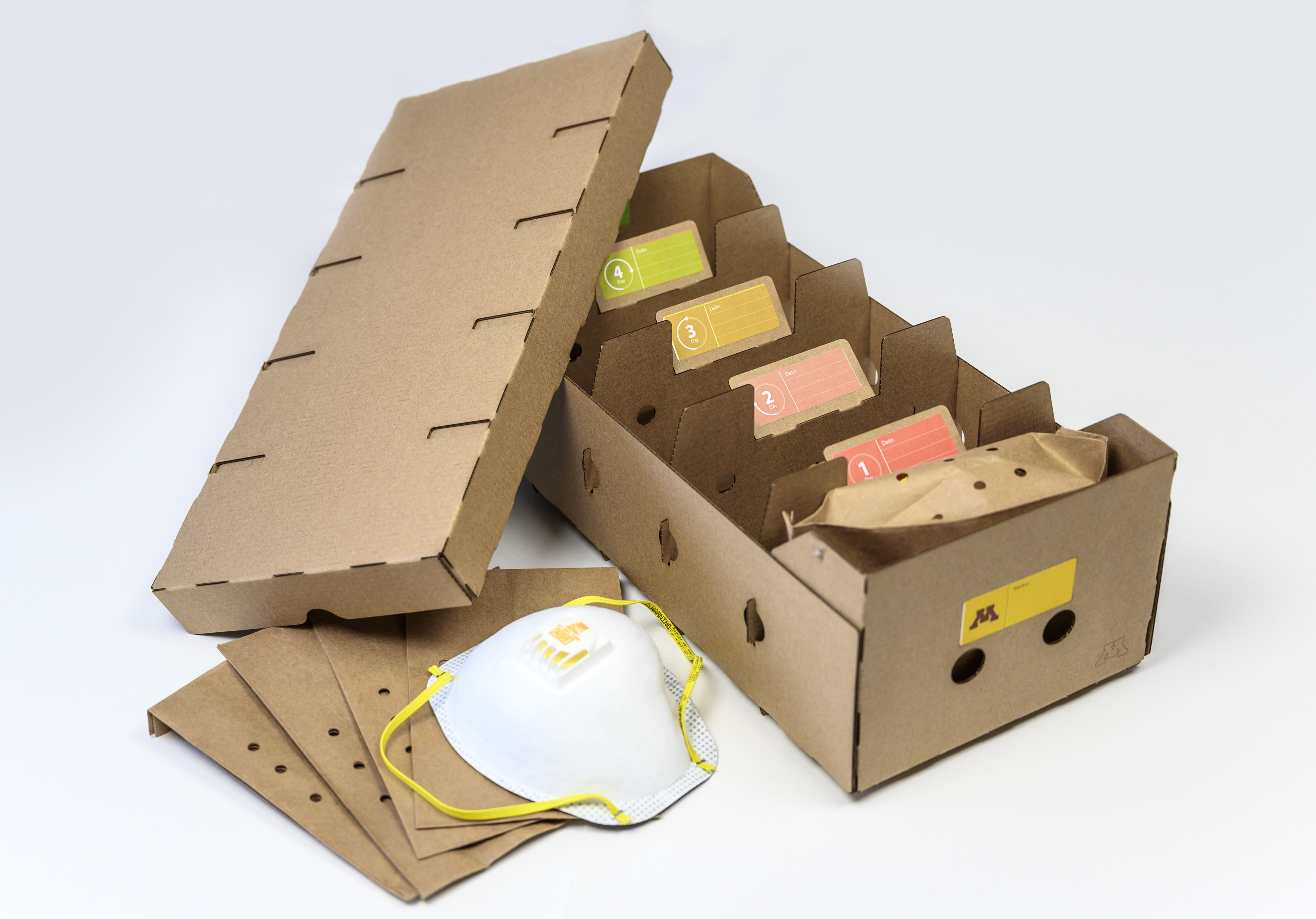The scarcity of N95 masks has occupied headlines and the minds of the public since the outbreak of COVID-19—hoarders of the masks have been busted, stockpiles have been donated, and several alternatives have been developed.

However, despite these efforts, masks that are designed for reuse are piling up in hospital corners, individually wrapped in paper bags, while doctors and nurses wait for them to be decontaminated. Motivated by the increasing burden and health risk posed by the used masks, Dr. Abe Jacob, Chief Quality Officer at M. Health Fairview, turned to the College of Design for help devising safe and efficient methods for mask storage and decontamination.
“We were finding paper bags lying all over the place in our units, an unintended consequence of our mask decontamination plan. We needed a simple but elegant storage idea to make this a more efficient and safer process,” explained Jacob.
Led by Assistant Professor Ehsan Naderi (Product Design) in collaboration with Professor Abimbola Asojo (Interior Design), Assistant Professor Jessica Rossi-Mastracci (Landscape Architecture), Fabrication Specialist Justin Kindelspire, Fabrication Director Molly Sanford, Professor Will Durfee (Mechanical Engineering), and Dean Carol Strohecker (College of Design), the team has responded to Jacob’s plea for a better storage solution with a light-weight, stackable box.
Each unit, made of low-cost corrugated cardboard, sports four partitions to form five, mask-holding compartments that can be constructed by hand in a matter of minutes. The boxes’ sustainable, space-efficient properties provide a much-needed improvement to the mounting heaps of paper bags, while also complying with CDC guidelines.
“It has been fascinating to give feedback during the design problem-solving process for the everyday clinical challenge of storing and organizing N95 masks during this COVID-19 pandemic,” said Asojo. “It reinforces again the notion that our collective efforts will be required to answer and solve societal challenges. We have to tackle societal problems collectively, and design is an influential player.”
After several Zoom meetings with healthcare providers, multiple design iterations, and user testing, over 500 of the storage boxes have been built and assembled in the College of Design’s Fabrication Shop, the first shipments of which are currently en route to hospitals and COVID-19 transitional care facilities in the Twin Cities and greater metro area.
Early response to the invention by hospital staff has been wildly positive, and demand for the boxes is spreading. Six facilities and counting are eagerly awaiting their boxes, which arrive neatly stacked, 150 to a pallet. To build on this positive momentum, Naderi has spearheaded the effort to disclose a new intellectual property, titled “Storage System for Re-Use and Extended Use of N95 Filtering Facepiece Respirators,” to the UMN Technology Commercialization office so the design can be available for open source.
He and his team have also begun drafting designs for a system to thoroughly sanitize and store hospital face shields. Reflecting on the process, Naderi remarked, “This amazing interdisciplinary collaboration of the University of Minnesota’s College of Design, medical school, and College of Science and Engineering led to a simple and efficient solution that helps our frontline heroes do their jobs more safely.”
Driven by the acute need for N95 masks in hospitals, faculty from the University of Minnesota’s College of Design, College of Science of Engineering, and medical school worked together to create two face mask designs that could be assembled using available materials.
The need for N95 masks has skyrocketed in recent weeks in response to COVID-19. To address this challenge, an interdisciplinary research team at the University of Minnesota Twin Cities has designed two respirator mask prototypes from donated filter material by Cummins and bendable components from Bedford Industries.
The following is a guest post written by Associate Vice Provost in the Office for Equity and Diversity and CSBR Senior Research Fellow Virajita Singh.





